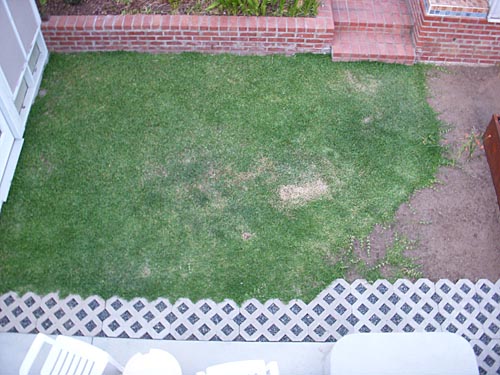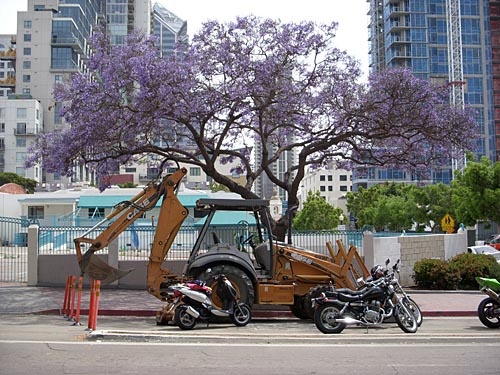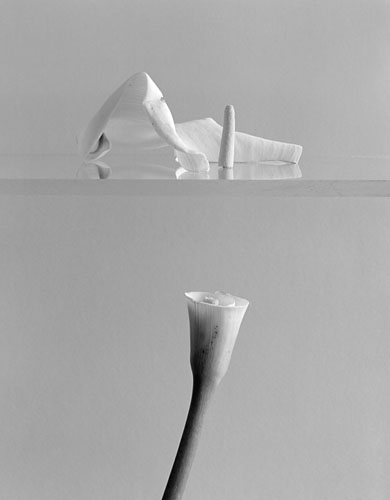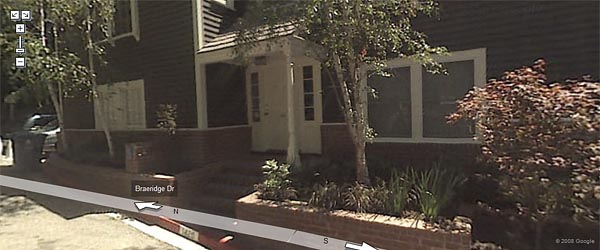When we moved into the house twenty years ago one of the first things we did was to take out the front lawn. Southern California is a desert, and it seemed like the environmentally sensitive thing to do. And besides, there are piles of interesting drought-tolerant plants, and replacing the lawn let us sample some of the neat plants from Southern California and around the globe that don’t require constant watering. Although it doesn’t look its absolute best with no added water, most of the front yard has endured most of the middle of summer with no rain or watering. The back yard, however, has been a different story.

For the longest time the lawn area was something like thirty feet square after you subtracted space devoted to walkways, a greenhouse, a deck, a shade bed, and a big zone for vegetables. The lawn, scrappy-looking much of the year and nothing I had any interest in maintaining, was John’s indulgence that I lived with grudgingly, knowing that his Snapper lawnmower from his yard maintenance business days thirty years ago wouldn’t last forever. Even after we pushed into the back yard with a room addition a couple years ago, reducing the lawn to less than half its original size, John was still attached to the green wasteland, still insisting it was worth his trouble to maintain.
Then, three weeks ago, it finally happened. The engine on the Snapper died, and John decided he didn’t want to replace it. An ad on Craigslist and a day or two and the mower found a new home, some guy with a lawn business who has other Snappers and wanted this one for parts.
I took the mower’s death as a sign from Gaia that it was time for the lawn to go. John took it as a sign that he needed a new machine. So the compromise was a battery-powered mower that didn’t have nearly the same pollution profile as the old Snapper. Better would have been a corded model, something that would use the power directly and not waste it charging batteries. Better yet would have been a nice push model that uses nothing other than human umph. But I at least feel better that we’re cutting down on greenhouse gases. And at least the lawn is a low-water Saint Augustine, so it’s not gobbling up the water other turf options would require.
Shopping for the mower then started to push another of my buttons: boycotting items manufactured in China. Every model we looked at was made there. I have nothing against the Chinese people, but its government supports repression in Tibet and Burma (aka Myanmar) so that I try to avoid buying stuff made there whenever possible. (The Chinese Embassy knows I’m doing this, if they read their letters.) I lost that one too. Dang, it’s hard doing anything else sometimes. Sarah Bongiorni has a book, A Year Without “Made in China,” in which she recounts her attempts for her family to go a year without purchasing anything made in China. She had so much trouble she could write a book about it.
Some talking points and data on the pollution from lawnmowers:
Lawn mowers and other machines with engines under 25 horsepower now account for 7 percent of California’s smog-forming emissions from mobile sources, the equivalent of more than 3 million cars, according to the California Air Resources Board.–San Diego Union
Low-horsepower machines account for at least 10 percent of the nation’s smog-forming pollution, which has been linked to respiratory and heart disease, according to the EPA. A single lawnmower emits as much pollution in an hour as 50 cars driving 20 miles.–Washington Post
As an example, mowing grass with a gasoline powered lawnmower causes as much pollution as operating a car for 13 hours.–Senator Dianne Feinstein citing the EPA study
And…the good folks at Environment Canada have a nice online calculator that lets you see a close approximation of how much your mower pollutes.














